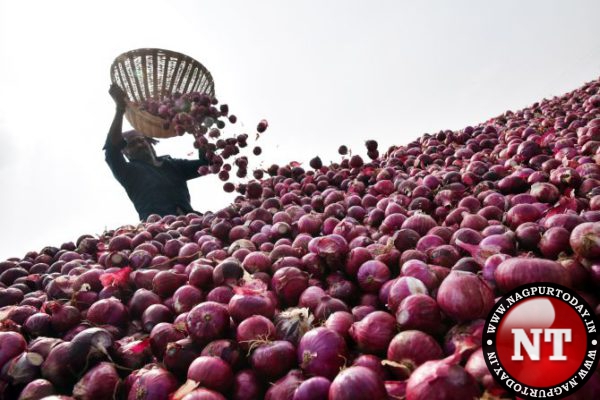
New Delhi: In a bid to ensure adequate domestic availability and stabilize prices, Centre has imposed a ban on onion exports until March 2024. This move comes amid concerns about rising onion prices in the domestic market, which have been attributed to factors such as unseasonal rains and supply chain disruptions. The DGFT, however, said that the exports of onions will be allowed on the basis of permission granted by the government to other countries based on their request, as per a report carried by news agency IANS.
“The export policy for onions is amended from free to prohibited until March 31, 2024,” the Directorate General of Foreign Trade (DGTF) said in a notification. The notification added that shipments of onion, whose loading had commenced before this notification, are allowed to be exported.
Further, in cases where a shipping bill is filed and vessels have already been berthed and anchored in Indian ports for the loading of onions and their rotation number has been allocated before this notification, that shipment is also allowed for export.
Centre Imposed Minimum Export Price Of USD 800 Per Tonne On Onion Till December 31 To Control Prices
The government had earlier imposed a minimum export price of $800 per metric ton until December 31, 2023, to discourage exports in an effort to curb spiraling prices.
The central government had imposed a Minimum Export Price of USD 800 per tonne on onions until December 31 to control prices. The Center had earlier imposed a 40% export duty on onion exports until December 31, 2023. This is an attempt to control the rising prices of onions in the country. The notification was issued by the Ministry of Finance on Saturday, August 19, 2023. The center had decided to procure an additional 2 lakh tons of onion for the buffer, over and above the 5 lakh tons already procured by the Ministry of Consumer Affairs, Food, and Public Distribution.
High Prices of Onion And Tomato Drove Up Thali Cost In November
The cost of a vegetarian ‘thali’ rose 10 per cent in November as compared to October, while the cost of a non-veg thali increased 5 per cent as the prices of onions and tomatoes shot up during the month, according to a CRISIL report.
Unseasonal rainfall during November had damaged the onion and tomato crops, which led to a shortage of the two commodities in the market and triggered the price rise.
“The cost of the vegetable thali rose 9 per cent year-on-year (YoY), driven by a 93 per cent and 15 per cent increase in onion and tomato prices, respectively. Prices of pulses, which account for 9 per cent of the veg thali cost, also increased 21 per cent YoY,” CRISIL said.
A vegetarian thali comprises roti, vegetables, rice, dal, curd, and salad. Its average cost is calculated based on input prices prevailing in north, south, east, and west India.
For non-vegetarian thali, the increase in prices was lower because of a dip in chicken prices, which account for 50 per cent of the total cost of a non-vegetarian thali. Chicken replaces dal in a non-vegetarian thali while the rest of the items remain the same. The cost of veg and non-veg thalis came down by 1 per cent and 3 per cent in October as compared to September, as potato, tomato, and broiler prices had fallen during the month.













